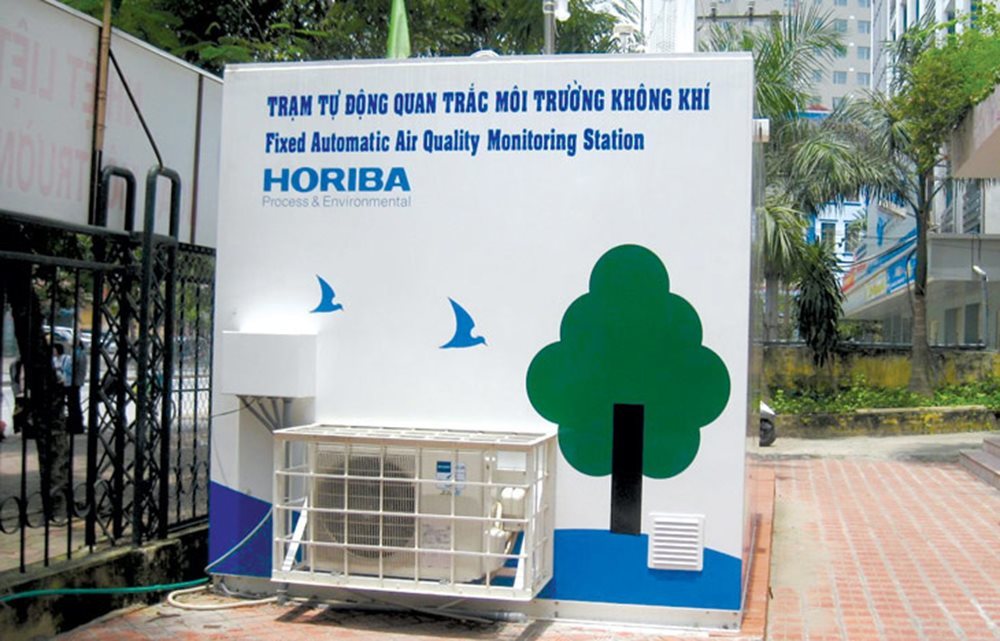The project aims to ensure the monitoring of air quality throughout the country, especially in hotspots.

It will help improve the air environment monitoring network in accordance with the 2016-2025 national program on natural resources and environment monitoring network development.
The monitoring stations will provide information and data on the current state and changes of air quality, thus giving warnings and forecasts about environmental quality in the regions, serving management m of socio-economic policies.
To find places for new monitoring stations, the implementing agency will investigate and survey new environmental pollution points and compare them with the monitoring points of the approved network.
The national natural resources and environment monitoring network is an open system, put under MONRE’s control, and is constantly upgraded and improved with the connection and information sharing among agencies at different levels, from central to local.
| Regarding the dust (PM10 and PM2.5) monitoring technology, the automatic monitoring stations run by the General Directorate of Environment are using light scattering technology. |
Regarding the dust (PM10 and PM2.5) monitoring technology, the automatic monitoring stations run by the General Directorate of Environment are using light scattering technology.
However, under the project, the agency has proposed using Beta attenuation monitoring technology. The stations using the technology provide data with high accuracy in conditions with a monsoon tropical climate and high humidity.
The automatic air monitoring stations are expected to monitor basic environment parameters, including SO2, NO-NO2-NOx, CO, O3, PM10 and PM2.5 with reference to Vietnamese standards QCVN 05:2013/BTNMT.
After analyzing the air pollution in Vietnam, the environment management agency has also proposed buying online real-time mercury (Hg) collecting and analyzing equipment, which will be installed at automatic air environment monitoring stations. The equipment will promptly discover and warn about pollution when the mercury concentration exceeds the permitted level under the Vietnamese standard QCVN 06:2009/BTNMT.
Environment experts pointed out that with the strong development of the cement, thermopower and steel production, which are polluting industries, and the rapid increase in number of road vehicles, the toxins in the air increase, especially in large cities and locations near industrial parks.
In many countries, the air monitoring to find toxins such as lead, cadmium, arsenic, nickel, and chromium is important work, together with monitoring for basic indicators. Therefore, the General Directorate of Environment has proposed taking PM2.5 dust samples and transferring PM2.5 filter to laboratories for analysis of toxins in dust (Pb , Cd, Ni, As, Cr…).
Thanh Lich

Hanoi air quality improves in March thanks to COVID-19
Hanoi’s air quality improved significantly in March following the drastic reduction of traffic and suspension of construction due to COVID-19 pandemic, the Vietnam Environment Administration (VEA) reported on Tuesday.

Air quality to improve from late March: VEA
The air quality in Vietnam will improve from the end of March into the following months compared to that in the first months of 2020, the Vietnam Environment Administration (VEA) has said.
 The Ministry of Natural Resources and Environment (MONRE) is moving ahead with a project on building 19 automatic air environment monitoring stations in 17 cities and provinces and 20 stations specializing in measuring PM2.5 dust." itemprop="description" />
The Ministry of Natural Resources and Environment (MONRE) is moving ahead with a project on building 19 automatic air environment monitoring stations in 17 cities and provinces and 20 stations specializing in measuring PM2.5 dust." itemprop="description" />